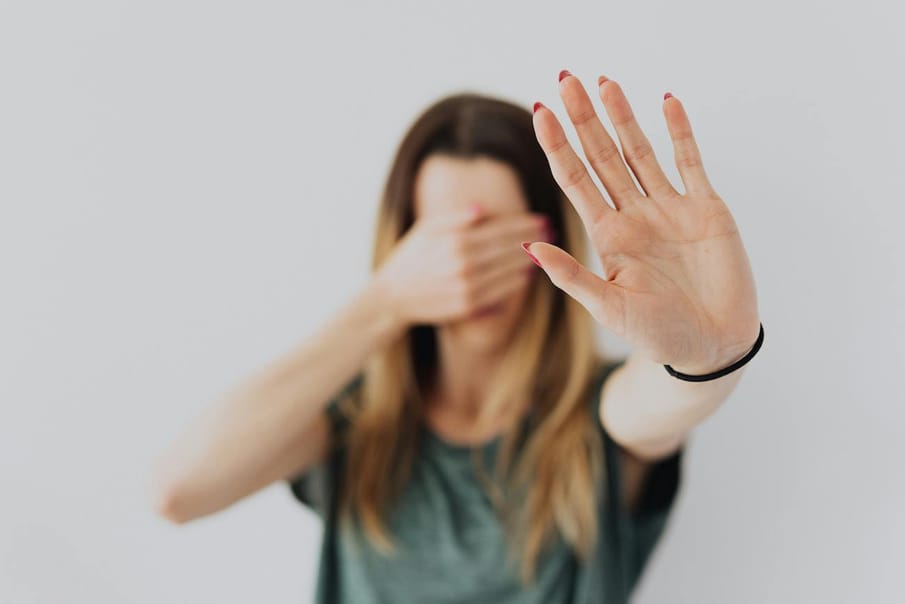What keeps us stuck in a state of fear, and how can we move through it?
We all know how it feels to be afraid. There’s a feeling of being off-balance, like you’re on the edge of a high-rise diving board with nowhere to go but down. Your heart rate increases, your breathing gets shallow, you might sweat and feel nauseous or dizzy.
For some, fear is a familiar companion, sitting alongside us for everyday activities, like joining a work meeting or leaving the house. For others, it’s a rare occurrence that barely scratches the surface of our day-to-day experience. However familiar you are with fear, it’s an important emotion.
What is fear, really?
One of our most primal emotions, fear alerts us to danger. All of those physical reactions are part of our fight-or-flight response, helping us to react when danger is near to keep us safe. Having said that, fear can evolve from a protective guard dog to a towering monster. Instead of protecting us from physical danger, it might see everything around it as a potential threat, attaching itself to situations and objects that don’t need it.
Fear can also be a symptom of mental health conditions like anxiety, panic disorder, and obsessive-compulsive disorder. It can stem from a traumatic experience, or it can be a learned behaviour.
Some of us will have personality traits that make us more prone to fear responses, while others will seek fear out as a source of joy. Those who enjoy the thrills of an adrenaline rush can find a sense of exhilaration from fear by doing things like jumping out of planes, riding roller coasters, and watching scary films. This is the interesting thing about fear: it can elicit the same physical reaction in people, but their emotional response may be entirely different.
Sometimes fears can develop into phobias. While the difference between fears and phobias is hotly debated, the general consensus is that a phobia is a specific fear about a particular situation or object that consistently causes distress. Typically the fear felt in phobias is disproportionate to the actual threat the object/situation poses. Examples of common phobias include claustrophobia (fear of small spaces), arachnophobia (fear of spiders) and acrophobia (fear of heights).
What keeps us stuck in a state of fear?
As we’ve discussed, fear can be a helpful emotion. It becomes a problem when we become stuck in it, and it prevents us from doing what we want to do. It may hold us back from living our lives fully, making our worlds smaller.
What can keep us stuck here is experiential avoidance. This is when we avoid the feeling of fear, by avoiding the objects or situations that make us fearful. Experiential avoidance is something we do to keep ourselves ‘safe’. By avoiding fearful or difficult feelings, we avoid perceived danger. This could include saying no to social events, not travelling for holidays or work, or closing ourselves off to opportunities.
The problem is, when we avoid what we’re afraid of, we can become more fearful of it. The avoidance gives it power, making it more difficult to face and break free from.
How can we get unstuck?
When it comes to moving past fear, the only way out is through. As much as we’d like to be able to step over it, slink under it, or neatly side-step it, as we’ve learnt, avoidance keeps us stuck. We need to face our fear to move through it, and instead of scurrying around in experiential avoidance, sit patiently in experiential acceptance.
Experiential acceptance is where we allow ourselves to feel fear, without judgement. When we do this, fear begins to dissipate as we dilute the potency of the emotion. These ideas can be investigated yourself or with the support of a therapist who offers acceptance and commitment therapy (ACT) – a type of therapy designed to help with experiential acceptance.
Other therapeutic approaches that can help with fear include eye movement desensitisation and reprogramming (EMDR), exposure therapy, and cognitive behavioural therapy (CBT). Hypnotherapy can also be a powerful tool, especially the Rewind Technique. Often, these treatments will all involve elements of exposure, whether in real life or your mind, to help reduce the fear response.
Alongside working with a professional, self-care can go a long way in supporting you when facing fears. This includes making sure you get plenty of sleep (our emotions can feel heightened when tired), reducing foods/drinks that increase anxiety (for example, caffeine) and grounding ourselves with mindfulness activities like meditation (this can help us separate ourselves from our fearful thoughts).
The monster of fear can be intimidating, but with the right tools, we can release ourselves from its grip, and move forward to where we want to be.
in the fear episode of our podcast, ‘Finding What Works’.


Comments